Focal length: a bit more than 50mm, selective focus lens
Mount: Canon
Min focus distance: 0.40m
Aperture: F 2.0 - F 22 via insertable discs
Length (from flange): ~ 70mm [+ 27mm for the adapter]
Diameter: ~ 80mm
Weight: 177gr.
TheLensbaby
3 G lens lets you control the shift and sqeeze of the lens
precisely to the mm with its 3 screw controls. The rest is similar to
the Lensbaby 2.0 with its fixed glass lens. It seems to me that the
focal length is nevertheless a bit longer, towards 60mm.
Some pictures:
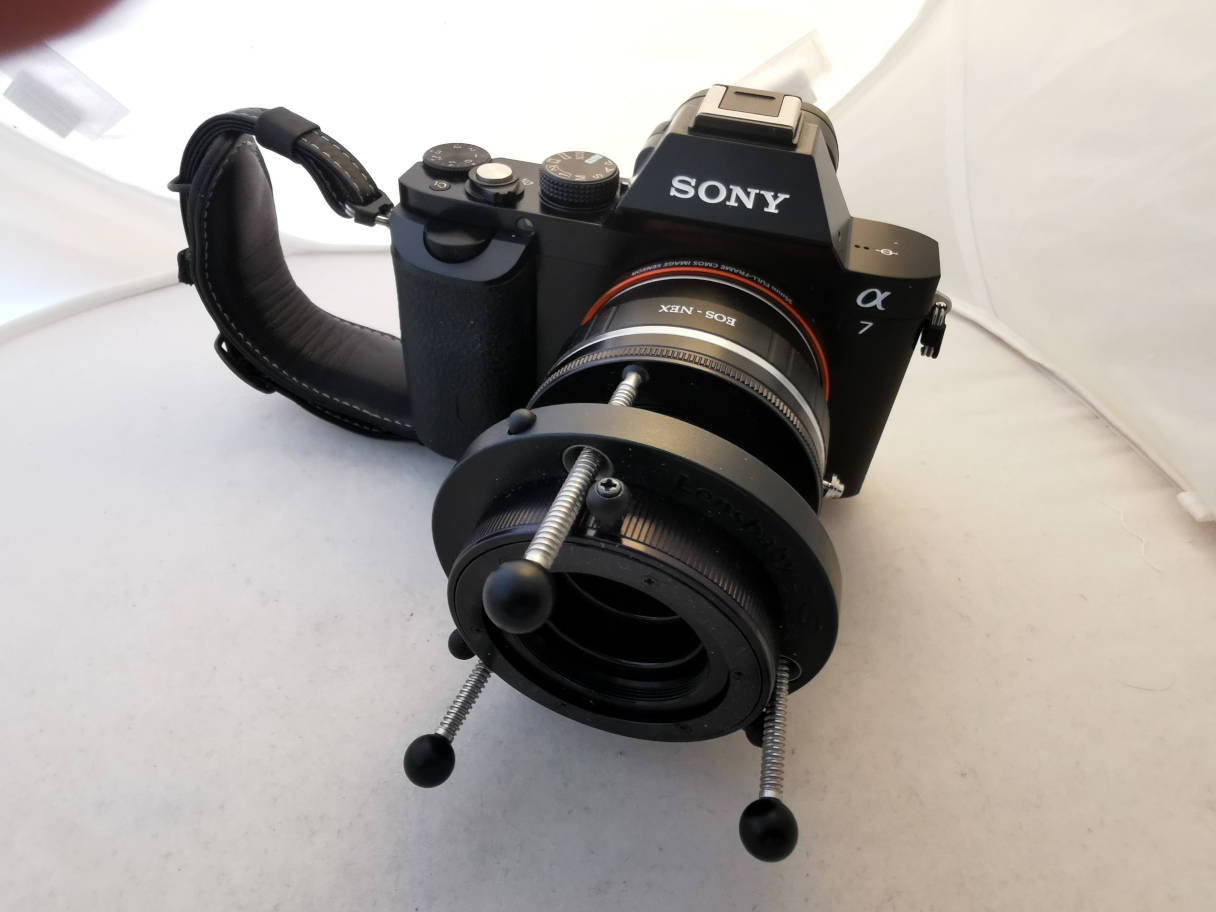
A7 and the lens. The lens itself sits deep inside.
The 3 screw controls stick out of the
front lens mount. The 2 balls under the front lens mount (not visible in the photo) have to be
squeezed to release the screw control. There is a lock button on the
outside of the front lens mount, so you can sqeeze and
bend the lens to the disired point, lock it with the button and then
fine-tune the lens with the screw controls. The outmost front of the
front lens mount can be turned for fine focus via the 3 smaller balls
of the fine focussing ring.
Some general remarks about Lensbabies. The first Lensbaby was a simple
plastic lens in
a simple PVC tube which has to be squeezed to focus and/or bent to move
the sharp area. The lenses are
set to be sharp only at the center, the rest is blurred, simulating
perfectly a "bokeh" effect. The sharp spot (called sweet spot) can be
shifted sideways. They cover full
format. The lenses are soft to blurry at full
aperture. Closed down they becoming sharper, but retain blurred edges.
The idea was a great success. Now there are plenty of different systems
and a wide choice of accessories and even swappable lenses.

From right to left: Lensbaby 2.0,
close to the first Lensbaby, fixed lens, but glass, not plastic. 3G,
similar to 2.0, but bending and sqeezing can be done precisely and
stays so until you push the release button. It has also a focus thread
for precise focussing, presented here. Control
freak, a 3G with swappable lenses. Composer Pro, has a ball-joint type
tube to move the sweet spot, swappable lenses and a focus ring. Scout, rigid tube, no bending,
swappable inserts, focus ring, often sold with a fisheye lens.
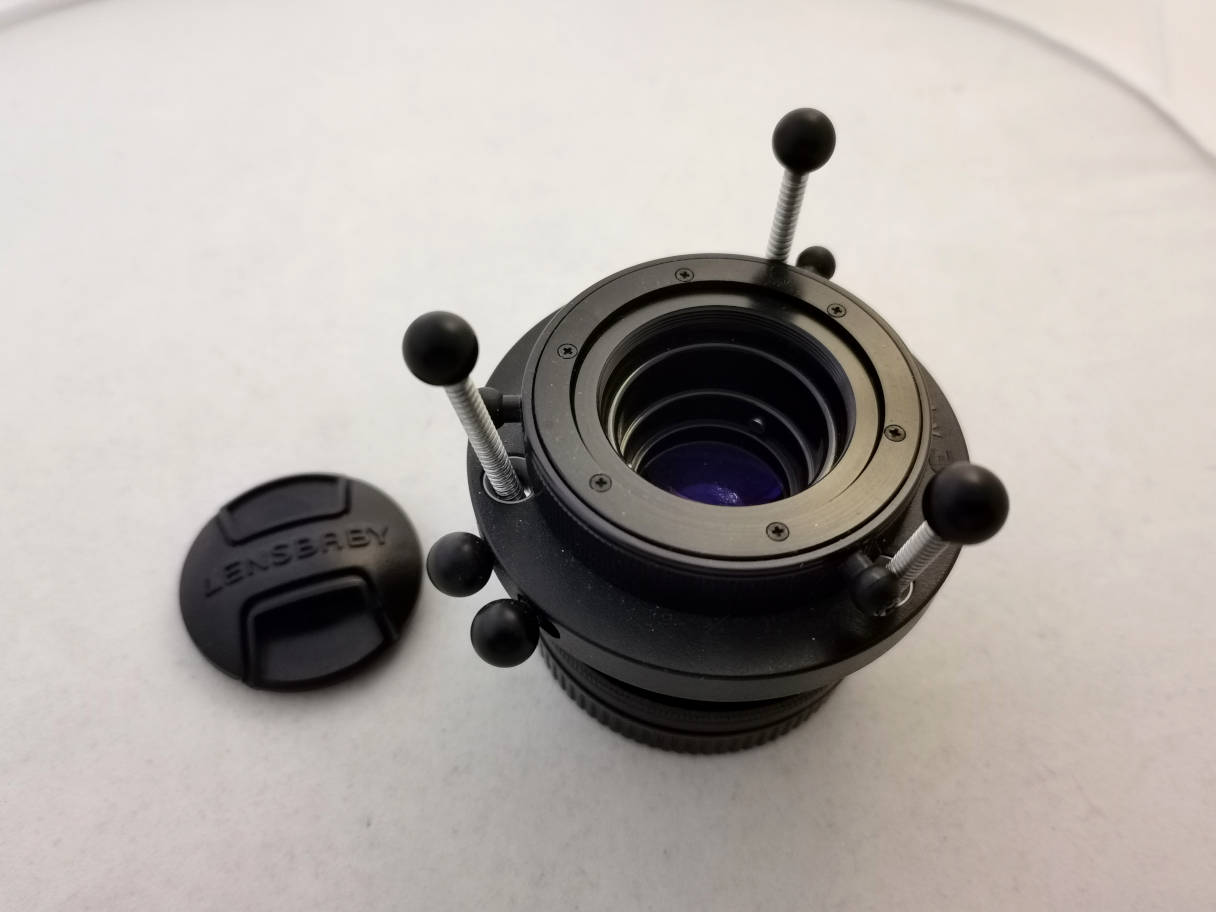
As said, the lens sits deep inside. To the front left are the 2 ball
that have to be
squeezed to release the screw control.
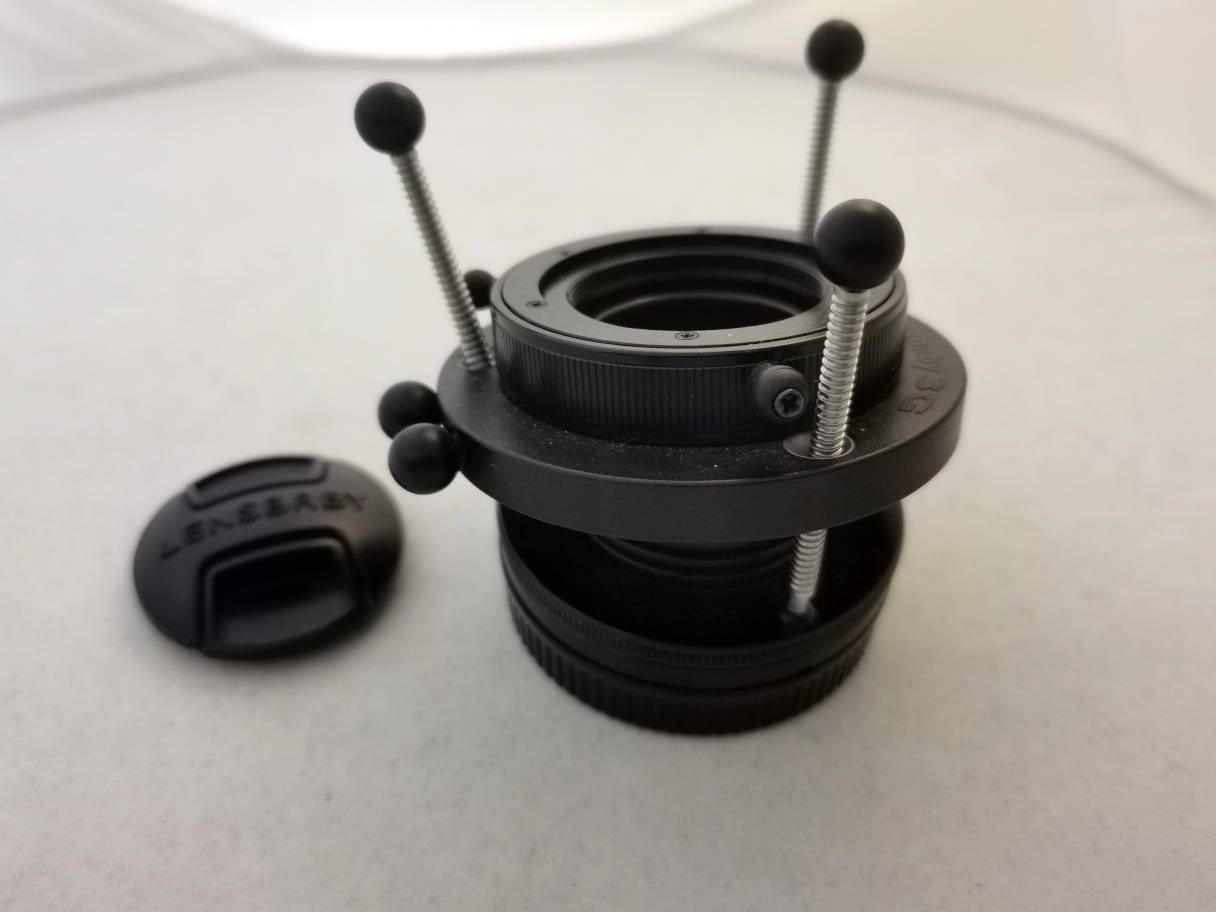
Lens bent and locked towards the back of the photo.
You need aperture disks which have to be put in front of the lens and
are held by
the magnets.
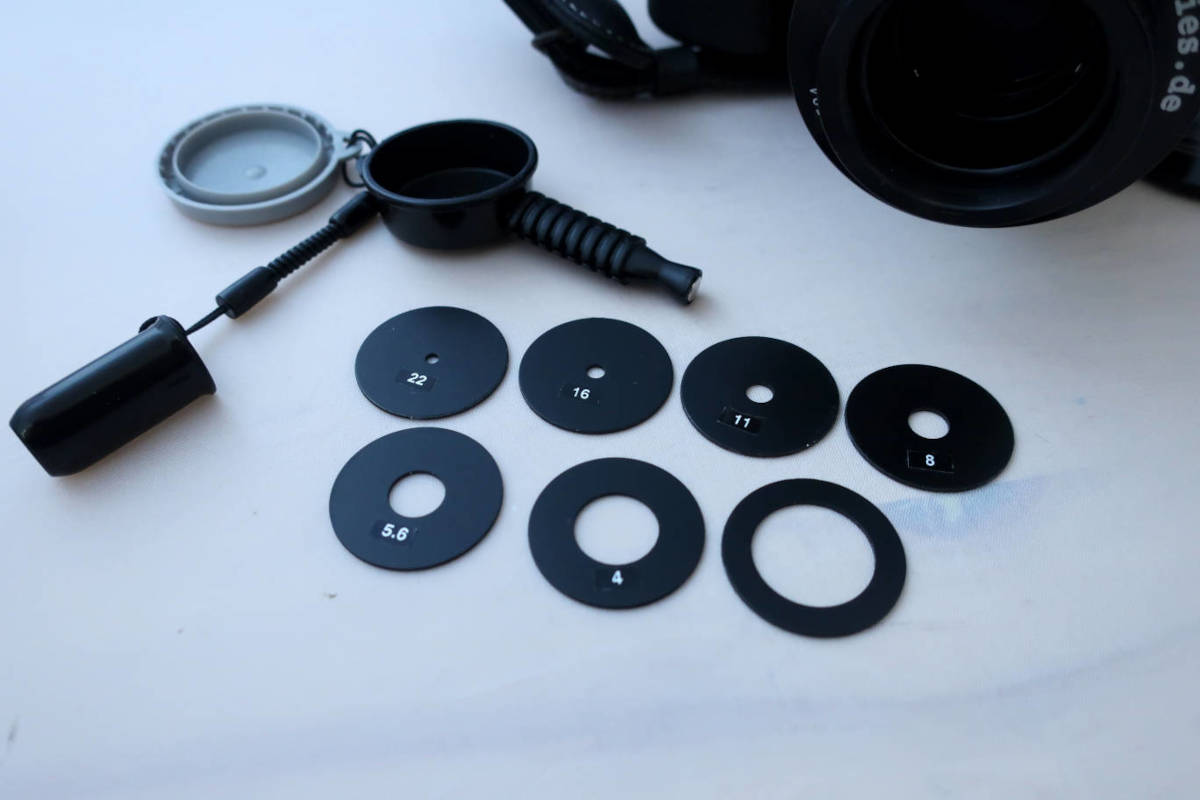
This is a full 7-aperture set with a very handy magnetic tool to change
the disks.
Sample pictures: You may click
on the sample image (except closest focus) for full resolution. The
full resolution image opens in a new window, so you can keep it open
for comparison. I tried to focus is on the
satelite dish near the
big solar panel near the center of the photo.
As the lens is similar to the Lensbaby 2.0, there is only a part of an
aperture series.

No disc, only a bit of sharpness at the center.
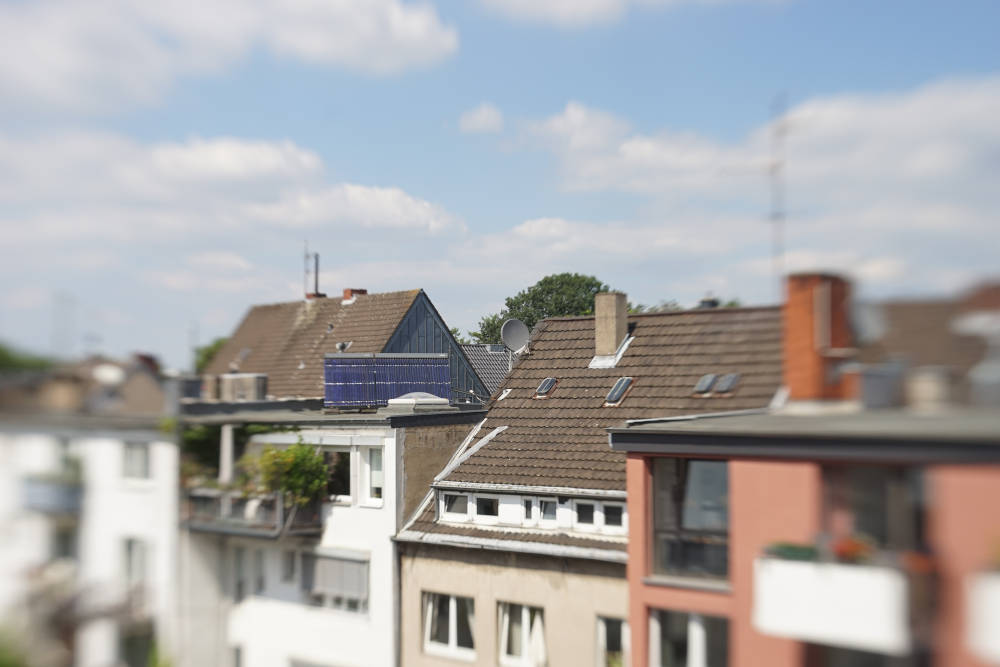
F5.6, a bigger focussed area in the
center, the rest is very soft.
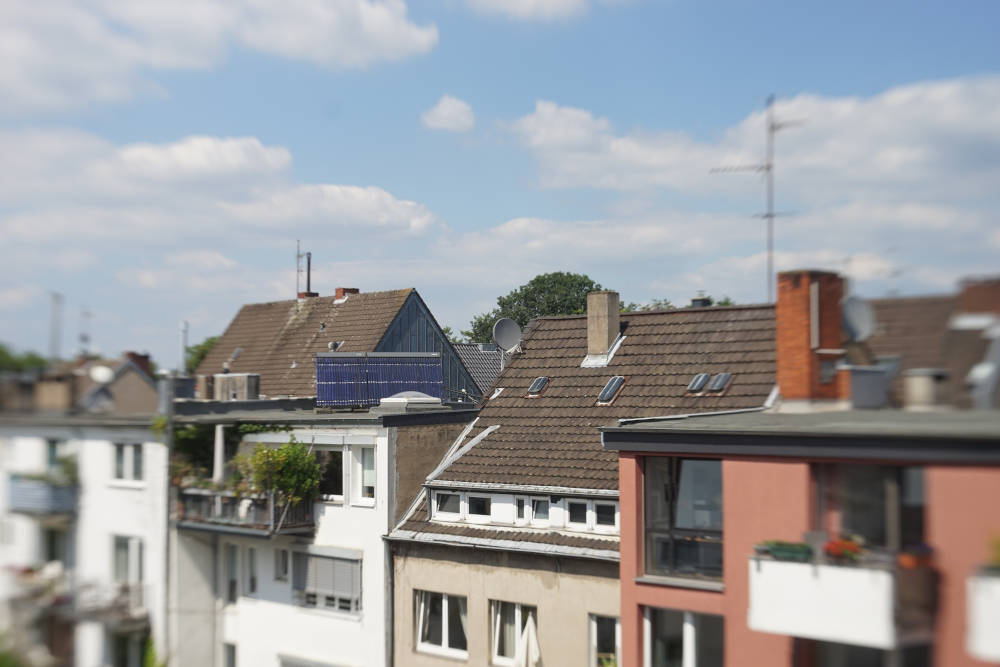
F11, focus gets clearer.

F 22, only the margins are soft.
One of the desired effects of the lens is that you can bend the tube
sidewards and so shift the focussed area off the center.
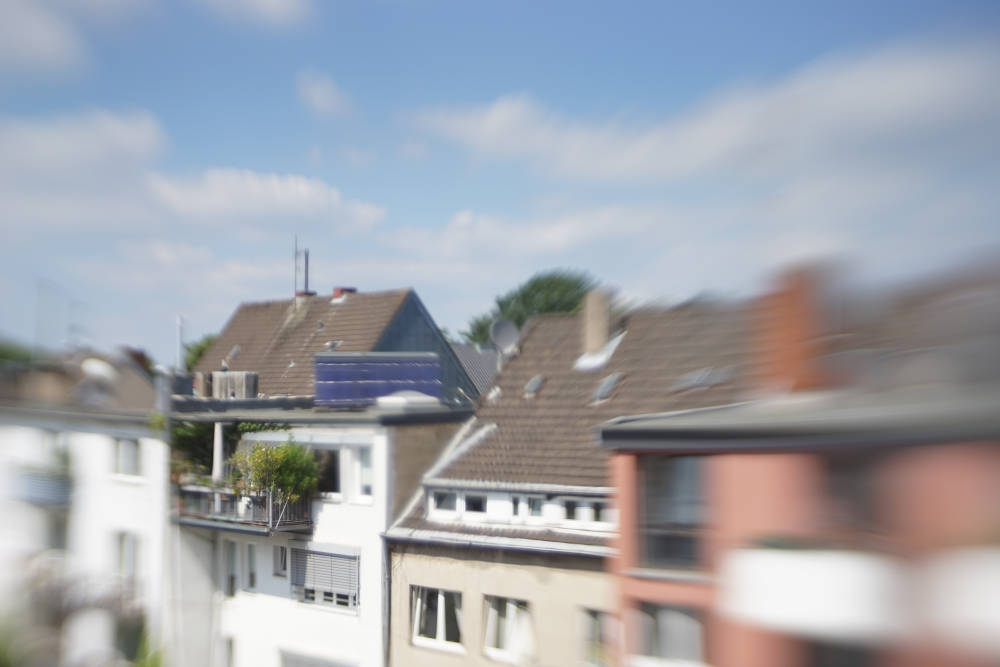
Focus shifted to the left,
no disc. Focus un the big balcony to the left.
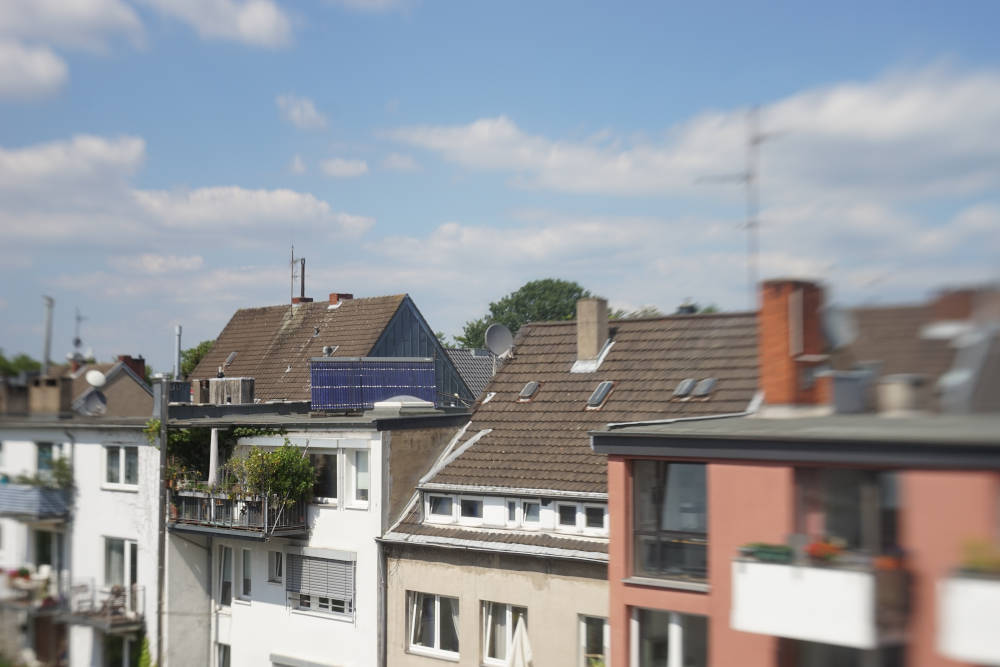
F11.

Focus shifted to the right, no disc. Focus on the satelite dish fixed
to
the chimney to the right.

F11.
Close facus. No
full resolution pictures.
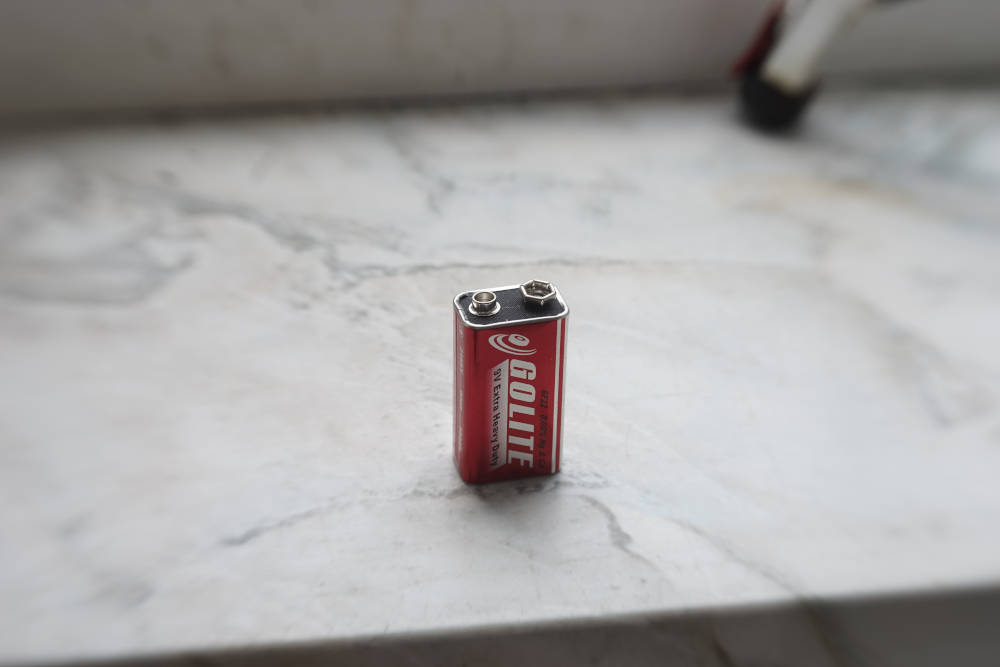
Closest focus of the lens is about 40cm from
outermost
edge of the lens, F 8. Focus on
the contacts of the battery.
This
is a fun photo lens, called selective focus lens.
It's a PVC tube which has to be squeezed to focus or bent to
move the sharp area. The control system is a big advantage to the 2.0. The lens is
set to be sharp only at the center, the rest is soft or blurred, simulating
perfectly a "bokeh" effect. The sharp spot (called sweet spot) can be
shifted sideways. It covers full
format. The lens is soft to blurry at full
aperture. Closed down it's becoming sharper, but retains soft edges.
And a general warning: squeezing and releasing the lens aspires dust
into your camera which can spoil your sensor. Zoom lenses do the same,
but in general they are well protected against dust passing inside via
an elaborate seal system. The lensbabies are simple constructions
without much dust sealing. So squeeze with care and clean your sensor
in case of.
The lens is nevertheless sturdy. It is easy to use after some learning.
It's fun to experiment
with its possibilities. I found mine for very
cheap, so it was worth a try. In no way would I have payed the original
prices. But if you come across a set for a reasonable price, try it
out. It's fun.



